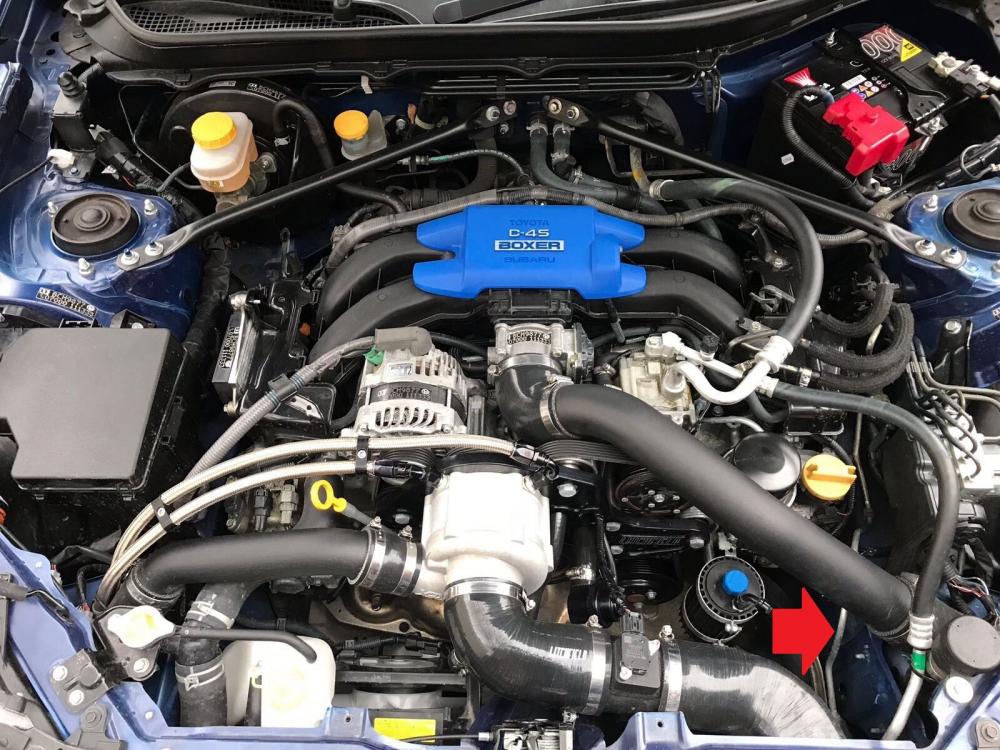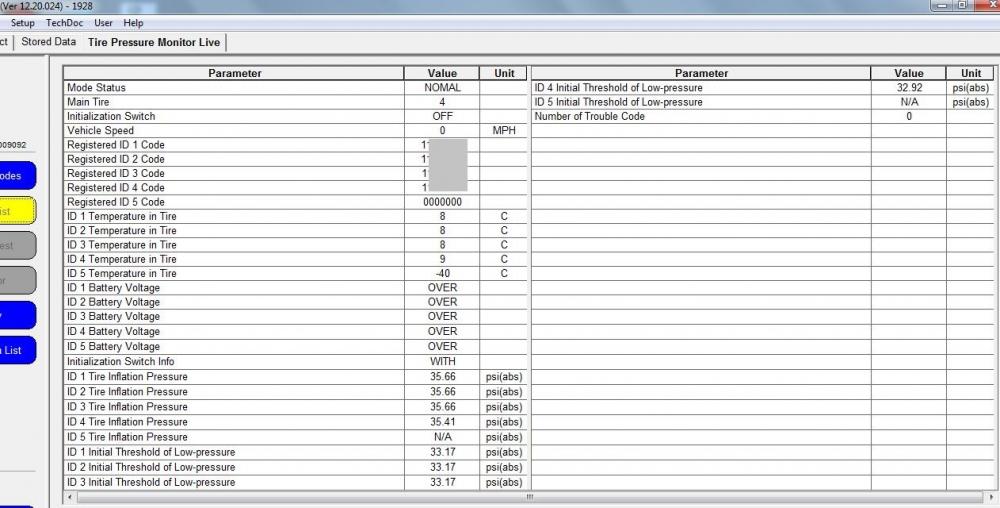

scbrz
-
Content Count
43 -
Joined
-
Last visited
-
Days Won
1
Posts posted by scbrz
-
-
Miltek resonated centre section wanted as I'm getting too old for the drone.
EDIT : I've got one now thanks.
-
On 1/5/2019 at 5:46 PM, Toybaru1 said:Timpsons, the blank you need is a TR49P.
I finally got one of these today https://cyberkeys.eu/keyline-car-keys-keyline-key-tr49p-toy40p,c50,p860,en.html but its much thicker than the one hidden in the key. This one has a slot in both sides whereas the hidden one is only half the thickness with one a slot on one side. Was yours the same? do they just cut it down to the correct thickness?
-
On 8/11/2021 at 5:55 PM, Danny.BRZ said:I’ve got litchfields old brz it has a milltek primary cat back exhaust on it (secondary cat delete) and it seems to be having issues with emissions on the MOT.
The car has passed every year since the exhaust was on, any reason why it would be over on the emissions?
I had the same issue, it was the CAT in the manifold.
-
-
-
Has anyone heard of this taller OEM oil filter that is supposed to give more filtration area? Its part number is 15208AA160.
Heres an example for sale. https://www.ebay.co.uk/itm/352710207598
Wondering if this is supposed to help with preventing oil starvation issues?
-
-
On 6/1/2020 at 9:10 AM, matrixprotein said:Going to get under the car today. Done abit more research. I'm beginning to think I've messed the strut as I used an impact gun to undo the top nut.
Figures... I used the ft86speed factory video as a guide and they also used an impact gun. Last time I'll be using them. But will take a look and update.
Sent from my SM-G973F using Tapatalk
I think I did the same as I changed the shocks in the end and it fixed it.
-
Interested in this, but need to understand some of the limitations first.
Did you buy this new, or from another owner?
Did you create a map from scratch? or are there base maps available?
QuoteCan ProECU BRZ be used to tune other BRZ/FR-S cars?
Yes, you can tune your friend's vehicles, but additional Flash Fees will need to be purchased.
How do I buy additional Flash Fees or Flash Points in order to program another vehicle?
You can buy additional Flash Fees and Flash Points to program another vehicle/ECU from your Master Tuner.How much are flash fees? and how many are left on the dongle?
Without the lead/software how can I tell if my current ROM is keyed, as if it is I can't edit it?
-
Does anyone else get a percolating kettle noise from their cars, coming from the suspension/tyres?
Unless I'm on perfectly smooth tarmac I get the road noise. I've changed tyres to another brand and no difference. Its starting to get a bit irritating. I don't recall it doing it before I reverted to stock springs from lowering springs, but maybe I'm just more honed into the noise now?
-
I was using the jack to just swap a tyre around. I find the car difficult to raise with a trolley jack or axle stands as its so low and the under side is covered in plastic trays. Where is safe to jack with a trolley jack? To use the axle stands would mean jacking to full height on the trolley jack which I don't feel is any safer. I bought a rubber slotted puck for the trolley jack but it won't fit under the sill join. I've not had these problems on other cars.
-
What do you use on the top of that bottle jack? Or do you just position behind the jacking seam?
-
I keep having problems with the standard wheel jack. no matter how I position it it always leans and looks sketchy when jacking the drivers side despite the ground and car being level to start with. The passenger side seem to be ok. Can't see anything wrong with the top of the jack or the car.
The jack looks very thin metal and poor quality compared to my WRX one.
Does anyone else have this problem or have an explanation?
-
8 minutes ago, Church said:Binding noise when steering lock to lock often caused by spring skipping at binded for whatever reason strut topmount bearings. Are those ok? Are (if aftermarket coilovers or camberplates) top nut properly tightened?
The struts/topmount were new. I think @Lauren is correct that its the drop link ball joints binding. the ARB has 2 tension holes, so I might move them to the other one.
-
I had eibach lowering springs and uprated anti roll bars fitted with stock drop links. I've since changed the springs back to stock but kept the arb with new stock drop links, and since then when I slowly reverse turn out of a parking space on full lock I get several binding noise/jolt through the steering/tyres, and then again when turning/moving forward. Is this because the anti roll bar is only designed for the lowered springs? Or could it be something else like the springs moving? Pretty sure its not the wheel/tyres catching on arches etc. It feels like the tyres are slipping on the tread blocks if that makes sense.
-
I'm going and will meet at the pub. hopefully there will be a friend with his GT86 too.
Leevsfortyone reacted to this -
Ah ok you meant the full plastic brackets on the wing. From reading the service bulletin though that won't fix the issue as well, as the wear is on the bumper molding and that is why it keeps popping out.
-
9 hours ago, Mark-in-Stoke said:I just bought new original brackets dead easy to fit and the two cast around £12
But where from?
-
On 1/11/2019 at 6:40 PM, scbrz said:Sorry I missed your request for an update.
But only now can I confirm that I've today removed the tyre pressure warning light that will now FAIL the MOT if on. (This should probably be made a sticky as its going to come up more in the future.) (pics attached)
I first need to state I didn't want to have to go to a tyre place or main dealer to sort this out, I wanted to do myself to learn about the car etc.
I had investigated buying new OEM sensors (price varied from £45 each, some members paid £150 for one sensor from Toyota), so this would be at least £180 for 4 sensors. If you wanted them just for winter tyres then you would need to reprogram the car ECU every time the tyres are changed as the sensor ID's would be different. Buying second hand sensors. These seemed to be available from the USA, however TPMS uses 315MHZ in the USA whereas Europe is 433MHZ, and would also need reprogramming in the TPMS ECU. You also have to be aware TPMS are disposable items as they basically run off a sealed watch battery in the sensor. Buying second hand could be false economy depending on how long keeping the car. Every car will fail an MOT in the future when the batteries run out so its going to get expensive to keep modern cars on the road as they get older.
The other option was to use programmable sensors. These can be programmed to match (clone) the ids of the sensors already programmed in the car TPMS ECU. This means that the ECU does not need reprogramming and you could use this for a second set of wheels.
To do this though you either need the existing sensors out of the wheels to read the code from, or you could read from in the wheel with a scanner. As I don't have the OEM wheels with the sensors (someone on here probably has them, on an older car without TPMS!) I needed to read the sensor codes from the car ECU.
To do this I got a diagnostic lead and a copy of Techstream. (This was scary as chosing a source of this is tricky as most come riddled with viruses/trojans.) Once I got this installed and connected I read the 4 sensor codes from the car TPMS ECU. This has a handy print out option.
08/11/2018 21:13:13 [Tire Pressure Monitor Live] System [Parameter] [Value] [Unit] Registered ID 1 Code 11C6A3E Registered ID 4 Code 1136AE7 Registered ID 3 Code 11A648D Registered ID 2 Code 11C6ADC
(I changed some of the values above just incase posting them on the internet is not a good idea in the future!)
In this process I found out that I could actually recode the sensor IDs into the ECU, so using new sensors would still be an option. I choose to use the reprogrammable clone-able ones though as they were cheaper than the precoded ones anyway. The downside with the programmable sensors is that although they arrive coded with a random code, they are not programmed for a particular car so they won't talk. To resolve this you need to program them to the specific car, and at the same time set the ID code into the sensor. Unfortunately they wouldn't do this where I bought them from which I requested when I ordered, so this meant that I had to buy a programmer to program the sensors.
Using the codes above I programmed each sensor and tested it. All working on the programmer showing that the sensors were working. However when I put inside the car I could not get the error light to go out and faults were reporting missing sensors still. It turns out tyre pressure sensors are funny things. After much research it appears to prolong the battery life they don't seem to transmit if they are not under pressure. This seems wrong as you would expect them to report a flat tyre. They don't do this they report a drop. If they go completely flat while the car is off the error light is lit due to the sensors being missing, so I guess its still telling you there is a problem.
This left me with a problem I would have to get my tyres removed from my aftermarket wheels and refitted/balanced just to test if the sensors would talk to the car. I hate getting tyres changed anyway as they always damage something. To get round this I was inspired by the TPMS pipe bomb. Google it.
I made this out of solvent waste plumbing pieces. At first this was not an option as too small for the sensors, but I realised that you can remove the valves from the sensors and then they fit inside the pipe. I tested this today with the pressure in the pipe at 35psi. The car also needs to be running for it to read the sensors, just having the ignition on did not seem to work. The error light was initially there, as the sensors communicate randomly, also for some reason the car had the minimum pressure set to 45psi!. I got round this by increasing the pressure in the pipe to 60psi. The light went out once all the sensors had reported in. After reducing the pressure in the pipe the light came back on. This time I reset the TPMS on the car. You have to hold the TPMS reset button not just until the light flashes but until the light goes out.
I had to buy the following items to resolve and test this works successfully.
- 1x UK Mini VCI J2543 For TOYOTA TIS Techstream Diagnostic Interface Cable (£13) (found that my Tactrix cable works with this so I might sell this)
- 4x Autel MX-Sensor 433MHz Programmable Universal TPMS Sensor (£88)
- 1x Autel MaxiTPMS PAD TPMS Sensor Programming Device (£50)
- 2 x 40mm solvent weld waste access plugs.(£1.50)
- 2x 40mm solvent weld waste couplers.(£1.50)
- Short piece of 40mm solvent weld pipe. (I had this)
- Tire valve (I had this)
- Solvent weld glue (I had this)
So roughly £150 to resolve, which compared to new OEM sensors is between 1/4 - 1/2 price. One outstanding interesting point would be to see if you could enter the same sensor id for all 4 sensors to avoid using 4 different sensors or change the number of wheels to 1 (I doubt this would work though).
Remaining optional step is to get the sensors fitted to the tyres ;-).
If anyone else decides to go down the same route, I have the programmer expense to recoup so could program your sensors to match your car for a small fee+postage!.
Any questions just ask.
As an update to the above how to, I can finally report my car passed its first MOT like this. Now I can get the replacement sensors fitted to the aftermarket wheels when the tyres are worn out and replaced at my leisure.
Shippers and BRZ-123 reacted to this -
1 hour ago, Lauren said:There is something wrong and we're still trying to fix it, I'm afraid.
ok, good that you are already on the case. thanks for your efforts.
Lauren reacted to this -
Why do I keep getting lots of emails the same throughout the day about this post? Is something wrong with the forum?
-
Sorry I missed your request for an update.
But only now can I confirm that I've today removed the tyre pressure warning light that will now FAIL the MOT if on. (This should probably be made a sticky as its going to come up more in the future.) (pics attached)
I first need to state I didn't want to have to go to a tyre place or main dealer to sort this out, I wanted to do myself to learn about the car etc.
I had investigated buying new OEM sensors (price varied from £45 each, some members paid £150 for one sensor from Toyota), so this would be at least £180 for 4 sensors. If you wanted them just for winter tyres then you would need to reprogram the car ECU every time the tyres are changed as the sensor ID's would be different. Buying second hand sensors. These seemed to be available from the USA, however TPMS uses 315MHZ in the USA whereas Europe is 433MHZ, and would also need reprogramming in the TPMS ECU. You also have to be aware TPMS are disposable items as they basically run off a sealed watch battery in the sensor. Buying second hand could be false economy depending on how long keeping the car. Every car will fail an MOT in the future when the batteries run out so its going to get expensive to keep modern cars on the road as they get older.
The other option was to use programmable sensors. These can be programmed to match (clone) the ids of the sensors already programmed in the car TPMS ECU. This means that the ECU does not need reprogramming and you could use this for a second set of wheels.
To do this though you either need the existing sensors out of the wheels to read the code from, or you could read from in the wheel with a scanner. As I don't have the OEM wheels with the sensors (someone on here probably has them, on an older car without TPMS!) I needed to read the sensor codes from the car ECU.
To do this I got a diagnostic lead and a copy of Techstream. (This was scary as chosing a source of this is tricky as most come riddled with viruses/trojans.) Once I got this installed and connected I read the 4 sensor codes from the car TPMS ECU. This has a handy print out option.
08/11/2018 21:13:13 [Tire Pressure Monitor Live] System [Parameter] [Value] [Unit] Registered ID 1 Code 11C6A3E Registered ID 4 Code 1136AE7 Registered ID 3 Code 11A648D Registered ID 2 Code 11C6ADC
(I changed some of the values above just incase posting them on the internet is not a good idea in the future!)
In this process I found out that I could actually recode the sensor IDs into the ECU, so using new sensors would still be an option. I choose to use the reprogrammable clone-able ones though as they were cheaper than the precoded ones anyway. The downside with the programmable sensors is that although they arrive coded with a random code, they are not programmed for a particular car so they won't talk. To resolve this you need to program them to the specific car, and at the same time set the ID code into the sensor. Unfortunately they wouldn't do this where I bought them from which I requested when I ordered, so this meant that I had to buy a programmer to program the sensors.
Using the codes above I programmed each sensor and tested it. All working on the programmer showing that the sensors were working. However when I put inside the car I could not get the error light to go out and faults were reporting missing sensors still. It turns out tyre pressure sensors are funny things. After much research it appears to prolong the battery life they don't seem to transmit if they are not under pressure. This seems wrong as you would expect them to report a flat tyre. They don't do this they report a drop. If they go completely flat while the car is off the error light is lit due to the sensors being missing, so I guess its still telling you there is a problem.
This left me with a problem I would have to get my tyres removed from my aftermarket wheels and refitted/balanced just to test if the sensors would talk to the car. I hate getting tyres changed anyway as they always damage something. To get round this I was inspired by the TPMS pipe bomb. Google it.
I made this out of solvent waste plumbing pieces. At first this was not an option as too small for the sensors, but I realised that you can remove the valves from the sensors and then they fit inside the pipe. I tested this today with the pressure in the pipe at 35psi. The car also needs to be running for it to read the sensors, just having the ignition on did not seem to work. The error light was initially there, as the sensors communicate randomly, also for some reason the car had the minimum pressure set to 45psi!. I got round this by increasing the pressure in the pipe to 60psi. The light went out once all the sensors had reported in. After reducing the pressure in the pipe the light came back on. This time I reset the TPMS on the car. You have to hold the TPMS reset button not just until the light flashes but until the light goes out.
I had to buy the following items to resolve and test this works successfully.
- 1x UK Mini VCI J2543 For TOYOTA TIS Techstream Diagnostic Interface Cable (£13) (found that my Tactrix cable works with this so I might sell this)
- 4x Autel MX-Sensor 433MHz Programmable Universal TPMS Sensor (£88)
- 1x Autel MaxiTPMS PAD TPMS Sensor Programming Device (£50)
- 2 x 40mm solvent weld waste access plugs.(£1.50)
- 2x 40mm solvent weld waste couplers.(£1.50)
- Short piece of 40mm solvent weld pipe. (I had this)
- Tire valve (I had this)
- Solvent weld glue (I had this)
So roughly £150 to resolve, which compared to new OEM sensors is between 1/4 - 1/2 price. One outstanding interesting point would be to see if you could enter the same sensor id for all 4 sensors to avoid using 4 different sensors or change the number of wheels to 1 (I doubt this would work though).
Remaining optional step is to get the sensors fitted to the tyres ;-).
If anyone else decides to go down the same route, I have the programmer expense to recoup so could program your sensors to match your car for a small fee+postage!.
Any questions just ask.
Lauren reacted to this -
3 hours ago, Toybaru1 said:Timpsons, the blank you need is a TR49P.
@Toybaru1Thats annoying, it was a Timpsons I went to today. I will have to go back with that code. Thanks.
-
On 12/4/2018 at 8:31 PM, The Minion said:Had same thing, broke key, used WD40 and other key to get in. Charged battery, took car to dealer and they put in 65Ah battery under warranty.
I went to key cutter and had a full size key cut. £13
I've tried 2 key cutters and they can't make a full size key. They had never seen one like it before, and all their blanks are double the thickness which explains the snapping issues. What company cut yours? @The Minion




Miltek resonated centre section wanted
in Wanted GT86 / BRZ Cars and Parts
Posted · Report reply
@STEVO9000 sent you a forum DM.